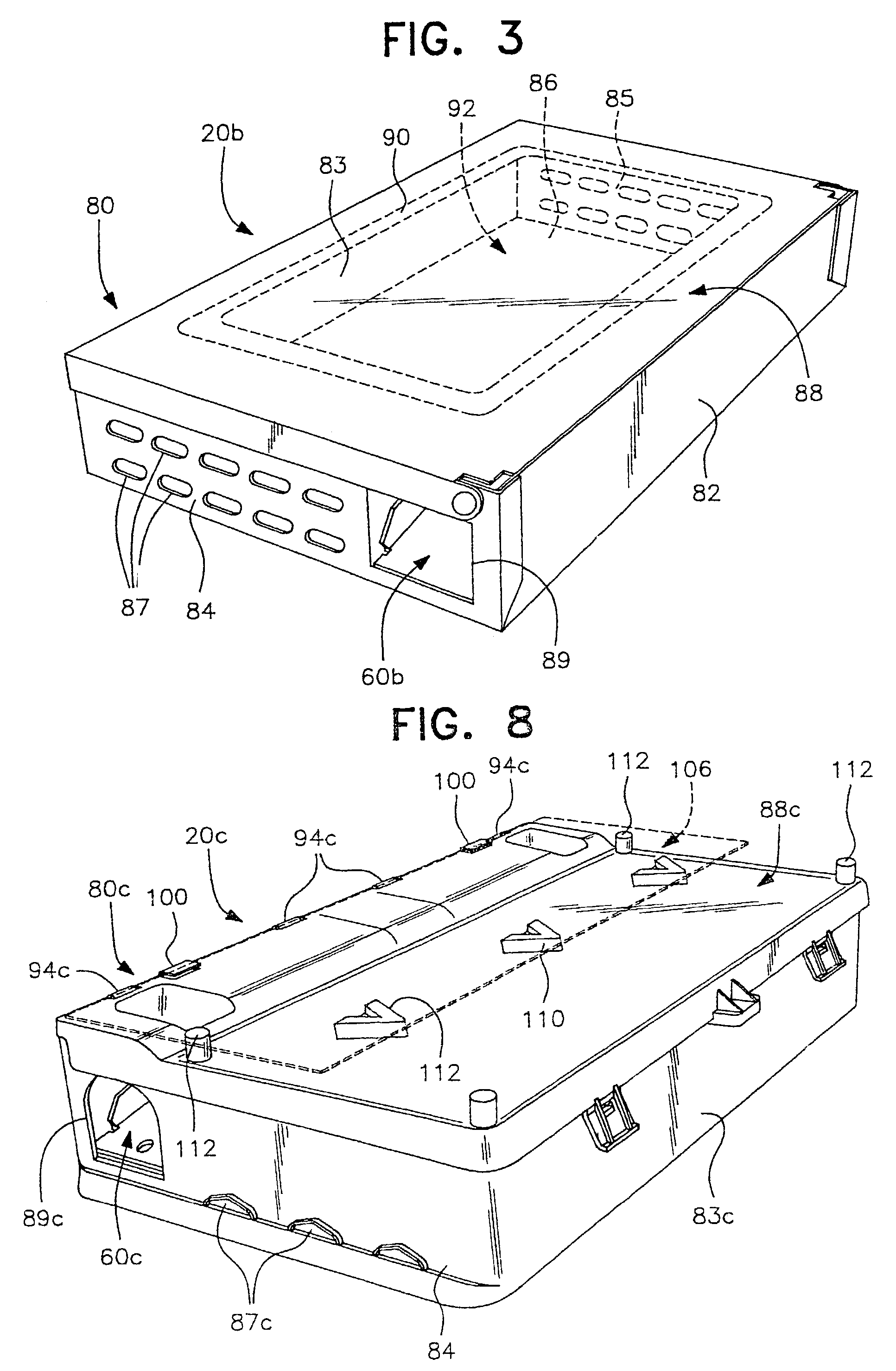Escape-proof repeating animal trap
a repeating, animal trap technology, applied in the field of repeating animal traps, can solve the problems of limiting the ability of a captured rodent to return to the passageway, limited success in efforts, and the tendency of a captured rodent to crawl under or nest in the spa
- Summary
- Abstract
- Description
- Claims
- Application Information
AI Technical Summary
Benefits of technology
Problems solved by technology
Method used
Image
Examples
Embodiment Construction
[0033]Referring now to the drawings, and more particularly to FIG. 1, portions of an early prior art repeating animal trap are designated generally by the reference numeral 20 with an inclined plane trap assembly designated generally by the reference numeral 25 there within.
[0034]A housing 22 includes peripheral walls, a portion of one sidewall being illustrated at 23, a bottom wall 24, and an openable cover (not shown) together defining an enlarged enclosure, generally shown at 21, for retaining one or more captured animals.
[0035]The inclined plane trap assembly 25 includes sides, one of which is shown at 26 (and may be a portion of the side wall 23 of the housing 22), and a roof 27 which, together with a portion of the bottom wall 24 of the housing 22 define an elongated passageway 30. At one end of the passageway 30 is an entrance opening 32 communicating with the exterior of the housing 22 and, at the other end of the passageway 30, is an exit opening 34 communicating with a hol...
PUM
 Login to View More
Login to View More Abstract
Description
Claims
Application Information
 Login to View More
Login to View More - R&D
- Intellectual Property
- Life Sciences
- Materials
- Tech Scout
- Unparalleled Data Quality
- Higher Quality Content
- 60% Fewer Hallucinations
Browse by: Latest US Patents, China's latest patents, Technical Efficacy Thesaurus, Application Domain, Technology Topic, Popular Technical Reports.
© 2025 PatSnap. All rights reserved.Legal|Privacy policy|Modern Slavery Act Transparency Statement|Sitemap|About US| Contact US: help@patsnap.com



